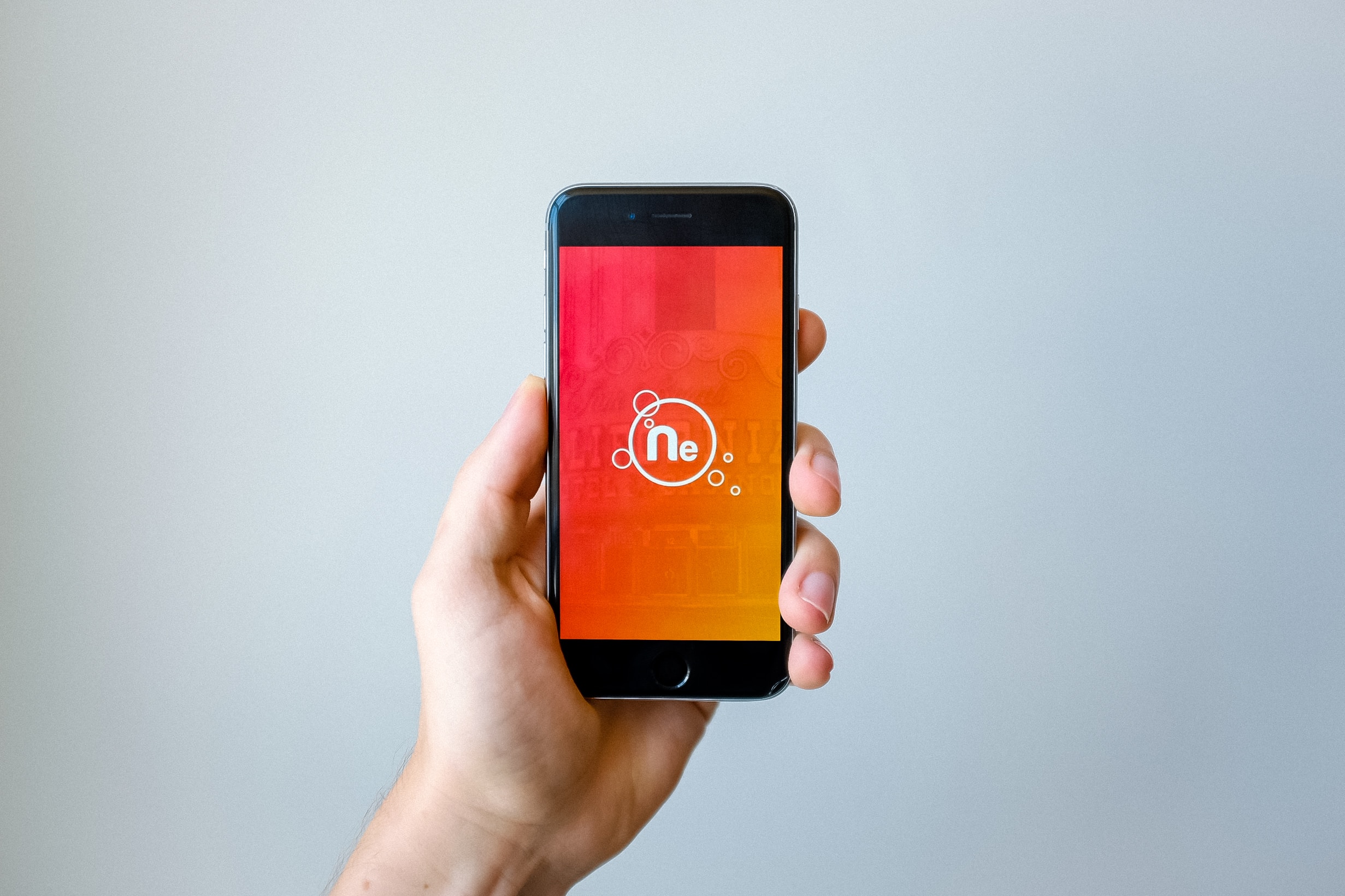In this ultimate guide, you will find everything you need to know about choosing the best smartphone in 2023. From sleek designs to cutting-edge features, this year’s smartphones are guaranteed to impress. Whether you’re a tech enthusiast or simply in need of an upgrade, we’ve got you covered. Discover the latest trends, compare various models, and make an informed decision that suits your needs and preferences. Get ready to enter a world of possibilities as we navigate through the best smartphones of 2023.

Operating System
When it comes to choosing the best smartphone in 2023, one of the first decisions you need to make is which operating system suits your needs. The two most popular options are Android and iOS, both of which have their own unique features and benefits. Android, being an open-source platform, offers a wide range of customization options and a diverse selection of apps on the Google Play Store. On the other hand, iOS, the operating system developed by Apple, is known for its seamless integration with other Apple devices and its focus on user privacy.
If you’re someone who prefers more control over your device and enjoys the freedom to customize it to your liking, Android may be the right choice for you. However, if you’re already invested in the Apple ecosystem, with devices like the iPad or MacBook, and value a cohesive user experience across all your devices, iOS might be the better option.
But what if you’re looking for something different? Luckily, there are other operating systems available, although they are not as mainstream as Android and iOS. For example, there’s the Linux-based Ubuntu Touch, which focuses on privacy and security. There’s also Sailfish OS, which offers a unique user interface and compatibility with Android apps. While these options may not have as many apps or as widespread support as Android and iOS, they can be great alternatives for those who prefer a different approach to smartphone operating systems.
Price Range
Another important factor to consider when choosing a smartphone is the price range. Smartphones come in various price categories, ranging from budget-friendly options to mid-range devices, all the way up to flagship models. The price range you choose often depends on your budget and the features you prioritize.
If you’re on a tight budget, there are plenty of affordable options available that offer decent performance and essential features. Budget smartphones tend to have smaller screens, less powerful processors, and lower resolution cameras compared to their higher-end counterparts. However, they still provide a reliable smartphone experience without breaking the bank.
For those willing to spend a bit more, mid-range smartphones offer a balance between price and performance. These devices often come with better cameras, more storage capacity, and faster processors. They provide a step up from budget devices, delivering a more premium feel and enhanced capabilities, without the astronomical cost of flagship models.
If you’re someone who wants the best of the best and doesn’t mind splurging, flagship smartphones are the way to go. These devices feature cutting-edge technology, top-of-the-line processors, high-resolution cameras, and stunning displays. They usually come with the latest and greatest features that set them apart from other smartphones on the market. However, it’s important to note that flagship devices typically come with a higher price tag, so it’s crucial to consider whether the added features are worth the extra cost for your individual needs.

Display
The display of a smartphone is one of the most crucial elements to consider when making a purchase decision. It’s the primary way you interact with your device and where you consume all content, from text messages to videos and games. Several aspects come into play when evaluating a smartphone’s display, including screen size, resolution, type, and refresh rate.
Screen size is often a matter of personal preference and depends on how you plan to use your smartphone. Some individuals prefer smaller screens that are easier to handle with one hand and fit comfortably in pockets. Others prefer larger screens that offer more real estate for media consumption and multitasking.
Resolution is a measure of how sharp and detailed the display is. Higher resolution displays offer crisper text and more vibrant visuals, making them ideal for media enthusiasts and those who value visual quality. The most common display resolutions in smartphones today include Full HD (1920×1080 pixels), Quad HD (2560×1440 pixels), and even 4K (3840×2160 pixels) on some high-end models.
The type of display technology used in a smartphone also affects the overall viewing experience. The most popular options are LCD (Liquid Crystal Display) and AMOLED (Active Matrix Organic Light Emitting Diode). LCD displays offer good color accuracy and brightness, while AMOLED displays provide deeper blacks and vibrant colors, thanks to individual pixel illumination. However, it’s worth noting that both technologies have their own advantages and disadvantages, so it ultimately comes down to personal preference.
Refresh rate refers to the number of times the display refreshes its image per second. A higher refresh rate, such as 90Hz or 120Hz, results in smoother scrolling and more fluid animations. This can greatly improve the overall responsiveness and user experience of a smartphone, especially during gaming or navigating through heavy applications. However, it’s important to consider that higher refresh rates can potentially impact battery life, so it’s a trade-off to keep in mind.
Camera
In recent years, smartphone cameras have become a major deciding factor for many when choosing a new device. The ability to capture high-quality photos and videos directly from your smartphone eliminates the need for carrying a separate camera for everyday use. When evaluating smartphone cameras, it’s essential to consider both the rear and front-facing cameras, as well as the various camera features offered.
The rear camera is the primary camera on a smartphone and is typically used for everyday photography. It’s important to look for a rear camera with a high-resolution sensor and a wide aperture size, as these factors contribute to better image quality, especially in low-light conditions. Additional camera features to consider include optical image stabilization (OIS) or electronic image stabilization (EIS) to reduce blurriness caused by hand movements, as well as various shooting modes and filters for added creativity.
The front-facing camera, also known as the selfie camera, has gained significant importance with the rise of social media and video calling. When evaluating a smartphone’s front camera, consider factors such as resolution, wide-angle capability, and the inclusion of features like portrait mode or beauty filters. Some devices even offer advanced features like face unlocking through the front camera, adding an extra layer of convenience and security.
Smartphone cameras today often come packed with a plethora of features and shooting modes, such as night mode for better low-light photography, panorama mode for capturing wide scenic views, and pro mode for manual controls over settings like ISO and shutter speed. These additional camera features can greatly enhance your photography experience and allow you to express your creativity in new ways.
Performance
Performance is a crucial aspect to consider when choosing a smartphone, as it directly impacts how smoothly the device runs and handles demanding tasks. Key components that contribute to a smartphone’s performance include the processor, RAM, and storage capacity.
The processor, commonly known as the “brain” of the smartphone, determines how quickly the device can execute tasks and handle multitasking. The two main players in the smartphone processor market are Qualcomm and Apple. Qualcomm’s Snapdragon processors are widely used in Android devices, while Apple’s A-series processors are found in iPhones. Both companies continuously improve their processors with each new generation, offering better performance, energy efficiency, and advanced features. When choosing a smartphone, look for the latest processor model that fits your needs and budget.
RAM, or Random Access Memory, is responsible for temporarily storing data and instructions for the processor to access quickly. The more RAM a smartphone has, the more apps and processes it can handle simultaneously without slowing down. Having ample RAM is especially important if you’re someone who frequently runs resource-intensive applications like games or video editors.
Storage capacity determines how much data, such as apps, photos, videos, and music, can be stored on your smartphone. If you’re someone who relies heavily on your device for media consumption or photography, consider opting for models with higher storage capacities. Keep in mind that some smartphones offer expandable storage options, allowing you to insert a microSD card to increase the available space.
It’s also important to note that a smartphone’s overall performance is influenced by various software optimizations made by the manufacturer. These optimizations, together with the combination of hardware components, can significantly affect how responsive and seamless your smartphone experience is. When evaluating a smartphone’s performance, it’s worth considering reviews and user feedback to get an idea of how well it performs in real-world usage scenarios.
Battery Life
Battery life is a crucial aspect for many individuals, as a dead smartphone can render even the most feature-packed device useless. When evaluating the battery life of a smartphone, several components come into play, including battery capacity, fast charging capabilities, and the availability of wireless charging.
Battery capacity is measured in milliampere-hours (mAh) and determines how long your smartphone can last on a single charge. The higher the battery capacity, the more time you can spend using your device without needing to recharge. Consider your typical daily usage patterns and opt for smartphones with larger battery capacities if you’re someone who heavily utilizes their device throughout the day.
Fast charging capabilities have become increasingly important as smartphones have become more power-hungry and people look for quick and efficient ways to recharge their devices. Look for smartphones that offer fast charging technologies, such as Qualcomm Quick Charge or OnePlus Warp Charge, as these can significantly reduce the time it takes to recharge your device. Some smartphones even support ultra-fast charging, capable of providing a substantial battery boost in a matter of minutes.
Wireless charging is a convenient feature that allows you to charge your device without the need for cables. Simply place your smartphone on a compatible wireless charging pad or stand, and it will start charging automatically. While wireless charging may not be as fast as traditional wired charging, it offers the convenience of easily placing your device down on a charging surface without fumbling with cables.

Connectivity
The connectivity options provided by a smartphone play a significant role in its usability and versatility. When evaluating a smartphone’s connectivity features, consider factors such as 5G support, Wi-Fi capabilities, Bluetooth compatibility, and the presence of NFC (Near Field Communication).
With the advent of 5G technology, smartphones capable of supporting this network have become highly sought after. 5G networks offer significantly faster download and upload speeds compared to 4G, allowing for seamless streaming, quicker file transfers, and enhanced online gaming experiences. If you live in an area with 5G coverage or plan to upgrade your network in the near future, opting for a 5G-enabled smartphone may be a wise choice.
Wi-Fi is an essential connectivity option that allows you to connect to the internet wirelessly. Look for smartphones with the latest Wi-Fi standards, such as Wi-Fi 6 (802.11ax), as they offer faster speeds, better range, and improved performance in congested areas. Wi-Fi 6 also helps conserve battery life, making it a worthwhile feature to consider.
Bluetooth is a wireless technology that enables you to connect your smartphone to various accessories, such as headphones, speakers, smartwatches, and fitness trackers. When evaluating Bluetooth capabilities, look for devices that support the latest Bluetooth version for better device compatibility and more reliable connections.
NFC, or Near Field Communication, is a technology that allows for contactless communication between devices. It’s used for various purposes, including making mobile payments, transferring files between devices, and even unlocking doors using NFC-enabled access cards. If you frequently use mobile payment services or value the convenience of NFC-based interactions, make sure the smartphone you choose has NFC capabilities.
Design
The design of a smartphone is more than just aesthetics—it’s about how a device feels and integrates into your daily life. When evaluating the design of a smartphone, consider factors such as materials, form factor, colors, and water and dust resistance.
The materials used in a smartphone can greatly impact its overall look and feel. Common materials include glass, metal, and plastic. Glass-backed smartphones often provide a premium and sleek appearance but may be more prone to fingerprints and smudges. Metal-bodied smartphones offer a sturdy and durable feel, but they can be heavier. Plastic smartphones are often lighter and more affordable, but they may not feel as premium as devices made of other materials.
Form factor refers to the size, shape, and ergonomics of a smartphone. Some individuals prefer larger devices with bigger screens for media consumption and productivity, while others prefer smaller and more compact phones that are easier to handle with one hand. It’s also worth considering the placement and accessibility of buttons and ports, as well as the overall comfort and grip when holding the device.
Colors have become an important aspect of smartphone design, allowing users to express their personality and individuality. Manufacturers often offer a range of color options, from classic black and white to vibrant and eye-catching hues. Consider the available color options when choosing a smartphone that suits your personal style.
Water and dust resistance are additional features that can greatly enhance the durability and longevity of a smartphone. Look for devices that come with IP (Ingress Protection) ratings, such as IP68, which indicates the device is dust-tight and can withstand immersion in water up to a certain depth. This feature can provide peace of mind, especially if you’re someone who frequently uses your smartphone in outdoor or potentially hazardous environments.

Security
Ensuring the security and privacy of your smartphone is crucial in today’s digital age. When evaluating a smartphone’s security features, consider factors such as facial recognition, in-display fingerprint sensors, and other biometric sensors.
Facial recognition has become a popular security feature in smartphones, allowing you to unlock your device quickly and conveniently using facial recognition technology. Look for devices that offer advanced facial recognition capabilities, such as those using 3D depth sensing or infrared sensors, as they provide more secure and accurate authentication.
In-display fingerprint sensors have gained popularity in recent years, offering a seamless and futuristic way to unlock your smartphone. These sensors are embedded underneath the display, allowing you to simply place your finger on a designated area to unlock your device. In-display fingerprint sensors can provide a quick and secure unlock method, although their performance may vary depending on device and technology used.
Other biometric sensors, such as iris scanners or voice recognition, may also be available on certain smartphones. These additional security features provide alternative methods for authentication and can add an extra layer of security to your device. Consider your personal preferences and the level of security you require when evaluating these options.
Software and UI
The software and user interface (UI) of a smartphone greatly affect the overall user experience. When evaluating a smartphone’s software, consider factors such as custom UIs, bloatware, and updates.
Custom UIs, or user interfaces, are modifications made by manufacturers on top of the base operating system. These customizations often provide additional features, customization options, and a unique look and feel to the device. Some well-known custom UIs include Samsung’s One UI, Xiaomi’s MIUI, and OnePlus’ OxygenOS. It’s worth considering your personal preferences and how well you resonate with a particular custom UI when choosing a smartphone.
Bloatware refers to pre-installed apps and software that come with the smartphone out of the box. These apps are often sponsored or requested by manufacturers or carriers, and they can take up valuable storage space and potentially slow down your device. While it’s difficult to completely avoid bloatware, some smartphones offer a cleaner software experience with minimal pre-installed apps. Consider how much bloatware you’re willing to tolerate and whether the smartphone offers the option to uninstall or disable unwanted apps.
Regular software updates are important for keeping your smartphone secure, up to date with the latest features, and free from bugs or performance issues. When evaluating a smartphone, consider the manufacturer’s track record in delivering timely updates and how long they typically provide support for older devices. Some manufacturers, such as Google and Apple, are known for providing consistent software updates, while others may be less reliable in this aspect. Staying on top of software updates can greatly enhance the longevity and performance of your smartphone.
In conclusion, choosing the best smartphone in 2023 involves considering various factors to ensure the device meets your specific needs and preferences. From deciding on the operating system to evaluating features like display, camera, performance, battery life, connectivity, design, security, and software, each aspect plays a crucial role in the overall smartphone experience. By carefully assessing these factors and considering your individual requirements, you’ll be well-equipped to make an informed decision and find the perfect smartphone to suit your lifestyle.




